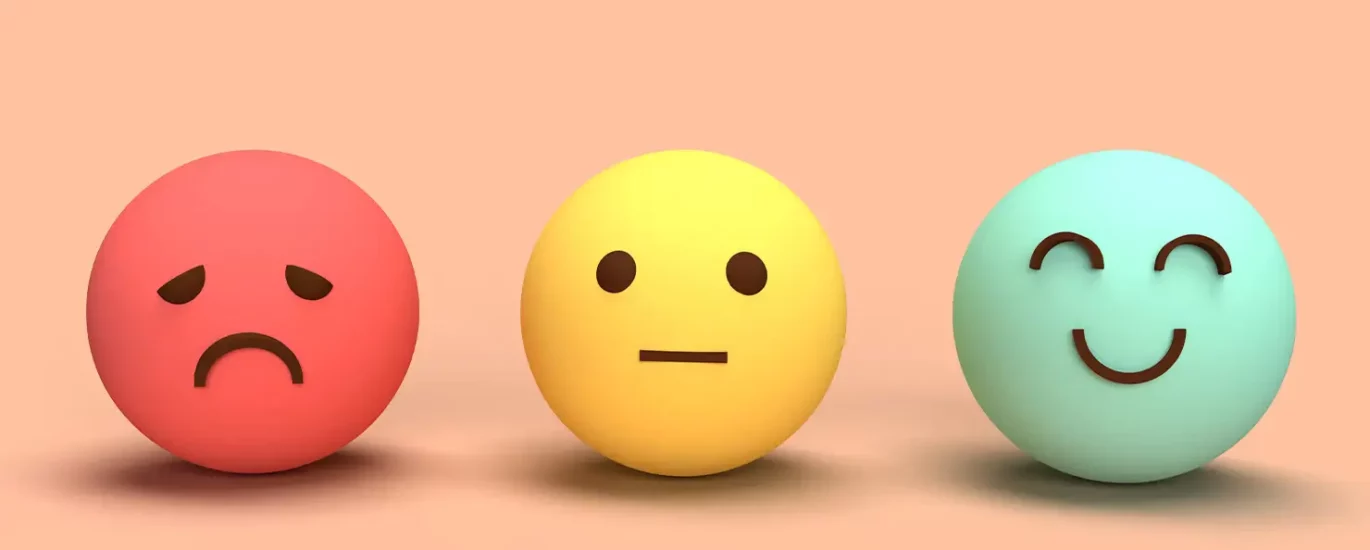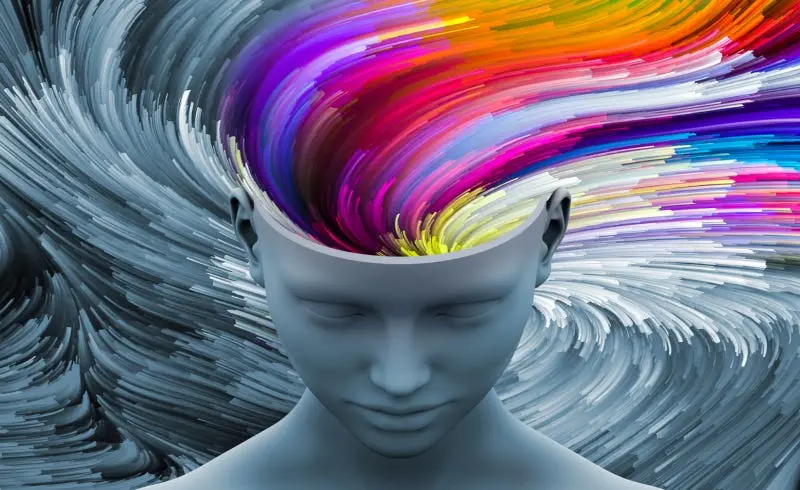


Colors have a strong impact on how we feel and our overall mental well-being. Mental health color, also known as color psychology, is a field that explores the connection between colors and our emotions. It has gained a lot of interest recently because it has the potential to improve our mental health Color psychology helps us understand how different colors can make us feel and how they affect our state of mind. Colors can make us feel energized or calm, happy or relaxed. They can even bring back memories or remind us of certain things. By understanding the psychological effects of colors, we can use them to feel better, improve our mood, and create environments that support our mental health.
The importance of mental health color is that it can influence our thoughts, feelings, and actions. Different colors have different meanings and can affect us in unique ways. From the strong and exciting red to the peaceful and soothing blue, each color has its own special impact on our emotions. In recent years, more and more people have become interested in color psychology and its potential to help with mental health. Researchers, psychologists, and designers have started to explore how colors can be used in therapy, interior design, and other areas to support our well-being.
The goal of this article is to explore the connection between colors and how they affect our emotions, mood, and overall mental well-being. By understanding the psychological effects of different colors, we can learn how to use them to create environments that make us feel good. Whether it’s choosing colors for our personal space or using colors in activities, this article will provide valuable insights into the power of mental well-being color.
Color psychology is the study of how colors can affect our emotions and behaviors. However, It helps us understand how different colors can make us feel and how they can influence our thoughts and actions. By learning about color psychology, we can also use colors to create specific feelings and improve our mental well-being. Colors have been important throughout history and in different cultures. They have had different meanings and symbolisms in various societies. For example, in ancient Egypt, the color gold represented something divine and eternal, while in Western cultures, white often represents purity and innocence. The cultural significance of colors can vary, and different societies may associate colors with different things.

One interesting aspect of color psychology is chromotherapy, which is also called color therapy. Chromotherapy is a holistic healing method that uses colors to promote well-being. It believes that each color has its own energy and vibrations that can affect our body and mind. For example, people belives that warm colors like red and orange give us energy and make us feel alive, while cool colors like blue and green can have a calming and relaxing effect. By using specific colors in chromotherapy, people aim to balance their energy and feel better.
Primary colors play a significant role in color psychology, each with its own associated psychological effects. Let’s explore the primary colors and how they can impact our emotions and mental state:
Red is a strong and intense color that can make us feel energized and excited. It grabs our attention and can make us feel passionate. However, too much red can sometimes make us feel anxious or agitated. It’s important to find the right balance with red.
Blue is a calming and soothing color. It helps us feel peaceful and relaxed. When we see blue, it can slow down our heart rate and reduce stress. But be careful, too much blue or certain shades of blue can make us feel sad or cold. It’s important to use blue in a way that feels just right.
Yellow is a warm and happy color. It makes us feel positive and optimistic. When we see yellow, it can bring us joy and energy. However, too much yellow or very bright shades can make us feel irritable or anxious. Finding the right amount of yellow is key.
Green is a color that’s connected to nature and brings a sense of balance. It makes us feel calm and relaxed. Being in nature with lots of green around us can reduce stress and make us feel good. Green also represents growth and hope. However, some shades of green can make us feel envious or stuck. Choosing the right shade of green is important.
Understanding how colors affect us can help us make choices that improve our mood and well-being. By using colors in the right way, we can create spaces that make us feel good and support our mental health.
Secondary colors, which are created by mixing primary colors, also have their own impact on our emotions. Let’s explore them:
Orange is a lively and warm color that brings enthusiasm, creativity, and a sense of energy. It can inspire us and make us feel excited. However, too much orange or intense shades of it can sometimes make us feel restless or overwhelmed. It’s best to use orange in moderation to enjoy its positive effects.
Purple is a color associated with spirituality, luxury, and creativity. It can make us feel intrigued and stimulate our imagination. Purple often inspires deep thinking and introspection. But too much purple or certain darker shades can bring a sense of sadness or introspection. It’s important to find the right balance when using purple.
Pink is a gentle and calming color that represents nurturing, compassion, and tranquility. It brings a feeling of love, care, and security. Pink can create a soothing atmosphere and promote relaxation. However, very bright or intense shades of pink may be too stimulating for some people. Consider personal preferences and sensitivities when using pink.
Brown is a stable and earthy color that brings a sense of warmth and reliability. It is often associated with nature and can make us feel grounded. However, too much brown or certain shades of it may feel heavy or dull.
Gray is a neutral color that conveys practicality, sophistication, and balance. It is often seen as professional and formal. Gray can create a calm environment and enhance focus. But excessive use of gray or certain shades can sometimes evoke feelings of sadness or gloom.
Black represents power, elegance, and strength. It can give a sense of authority and sophistication. Black creates a dramatic atmosphere. However, it is also associated with darkness and can bring feelings of heaviness or negativity if used too much or in the wrong way.
Understanding the psychological effects of secondary colors and other hues helps us make choices that support our emotions and well-being. By using colors wisely, we can create spaces that uplift our mood and promote a positive atmosphere.
Color psychology is used in mental health settings like hospitals, clinics, and therapy rooms to create supportive environments. Let’s explore how it is applied:
In mental health facilities, color choices are important for making patients feel calm and relaxed. Soft and gentle colors, like pastels, are often used to create a peaceful atmosphere. Colors like blue and green are commonly used in therapy rooms because they have a calming effect and help patients feel comfortable sharing their feelings.
Art therapy uses colors to help patients express themselves and heal emotionally. Different colors have different meanings, and patients are encouraged to choose colors that reflect their emotions. Color visualization involves imagining specific colors to feel a certain way. For example, imagining calming blue or energizing yellow can help reduce stress and anxiety.
Color breathing exercises combine color visualization with deep breathing. Patients imagine breathing in a particular color that represents the emotion they want to feel. Breathing in calming blue or energizing orange while taking deep breaths can help regulate emotions and improve well-being. These exercises can be done in therapy sessions or as part of daily self-care.
Colors are chosen in mental health settings to create a sense of emotional safety and comfort. We can use warm and nurturing colors like soft pink and earthy tones in common areas to create a welcoming environment. Adding natural elements and greenery enhances the calming effects and promotes well-being.
It’s important to consider personal preferences and cultural backgrounds when using color psychology in mental health settings. Customization and flexibility are key. By using color psychology, mental health professionals can create environments that support therapy, improve emotional well-being, and have positive effects on patients seeking mental health support.
Colors have a personal meaning for each of us, so it’s important to consider our individual preferences when it comes to promoting mental well-being. Here are some easy tips to incorporate color choices into our daily lives:
Colors can bring up different emotions and memories for each person. It’s essential to recognize our own unique feelings and experiences with colors. For example, some colors might make us feel calm and relaxed, while others may remind us of happy or sad times. By being aware of these associations, we can choose colors that uplift our mood.
Our homes should be a place of comfort and happiness. We can select colors that make us feel good and create a peaceful atmosphere. Soft pastel shades like light blues or greens can create a soothing environment. Bright yellows or oranges can add energy and warmth. We can experiment with colors on walls, artwork, furniture, and decorations to personalize our space.
The clothes we wear can impact our mood and confidence. We can choose colors that make us feel positive and confident. If we need a boost of energy, vibrant colors like red or orange can be great choices. For a calming effect, cool tones like blue or green can be soothing. Finding a balance that matches our personal style and makes us feel good is key.
Colors in our workplace can affect our productivity and well-being. If possible, we can personalize our work area with colors that help us focus and feel inspired. Blues and greens can promote concentration and a sense of calmness. Adding touches of vibrant colors can boost motivation. Bringing in plants or nature-inspired elements can create a relaxing atmosphere.
Discovering the right colors for our mental well-being is a personal journey. We can take time to reflect on how different colors make us feel and experiment with their presence in our surroundings. Keeping a journal can help us record our emotions and experiences with different colors. We should allow ourselves the freedom to explore various color combinations and make adjustments to create a space that supports our mental well-being.
Remember, there are no strict rules when it comes to choosing colors for mental well-being. It’s about finding what resonates with us and brings positivity into our lives. By considering our personal associations, incorporating colors into our home, wardrobe, and work environments, and embracing self-reflection and experimentation, we can create a color palette that promotes our mental well-being.
The impact of colors on our mental health and well-being cannot be overlooked. By understanding color psychology and personal associations with colors, we can make intentional choices that support our emotional state. Whether it’s incorporating calming hues in our home decor, selecting mood-boosting colors in our wardrobe, or creating supportive work environments, colors have the power to uplift our mood and promote a positive mindset. Remember to embrace self-reflection and experimentation to find the color palette that works best for you. By harnessing the benefits of mental health color, we can enhance our overall mental well-being and live happier, healthier lives.